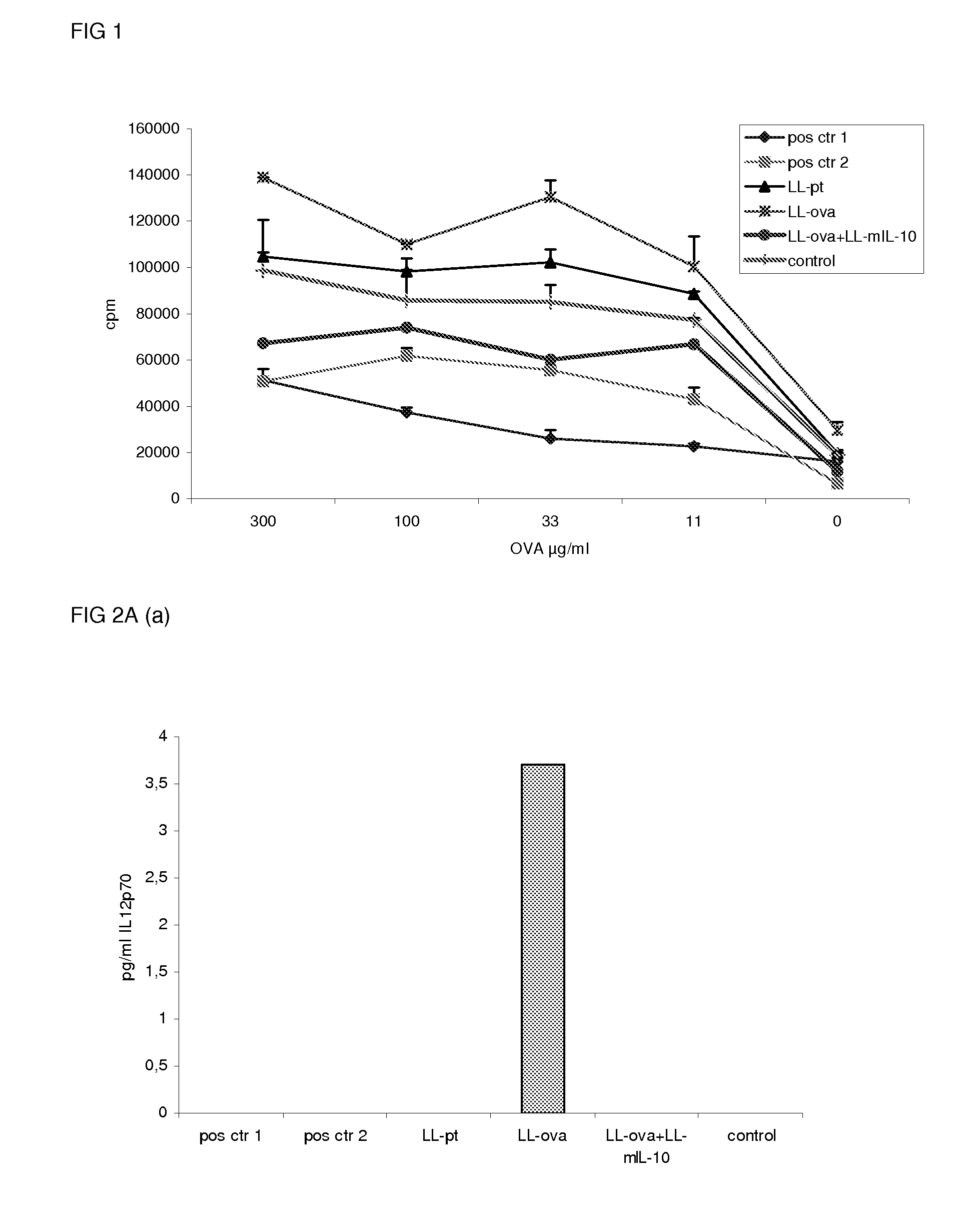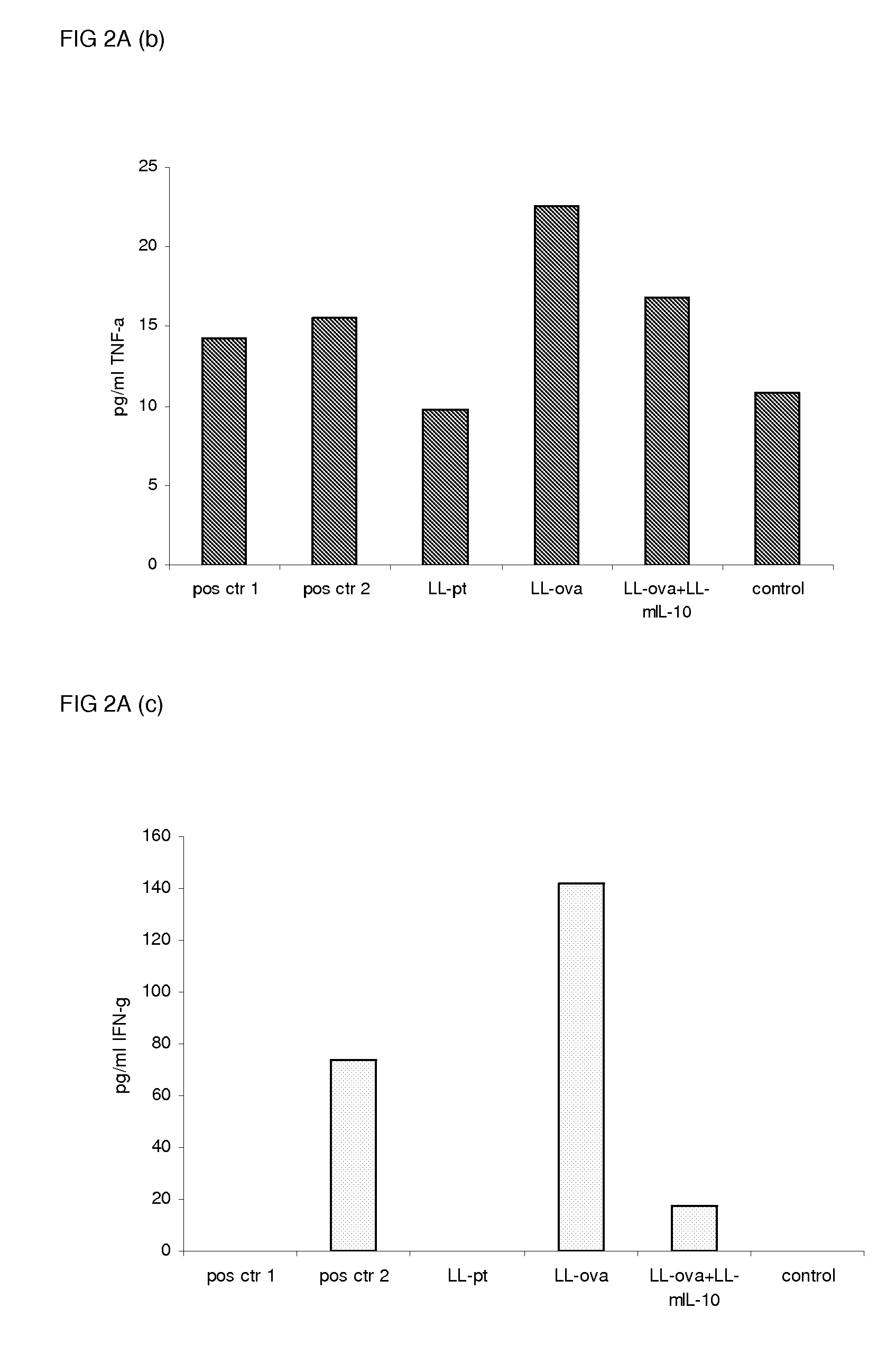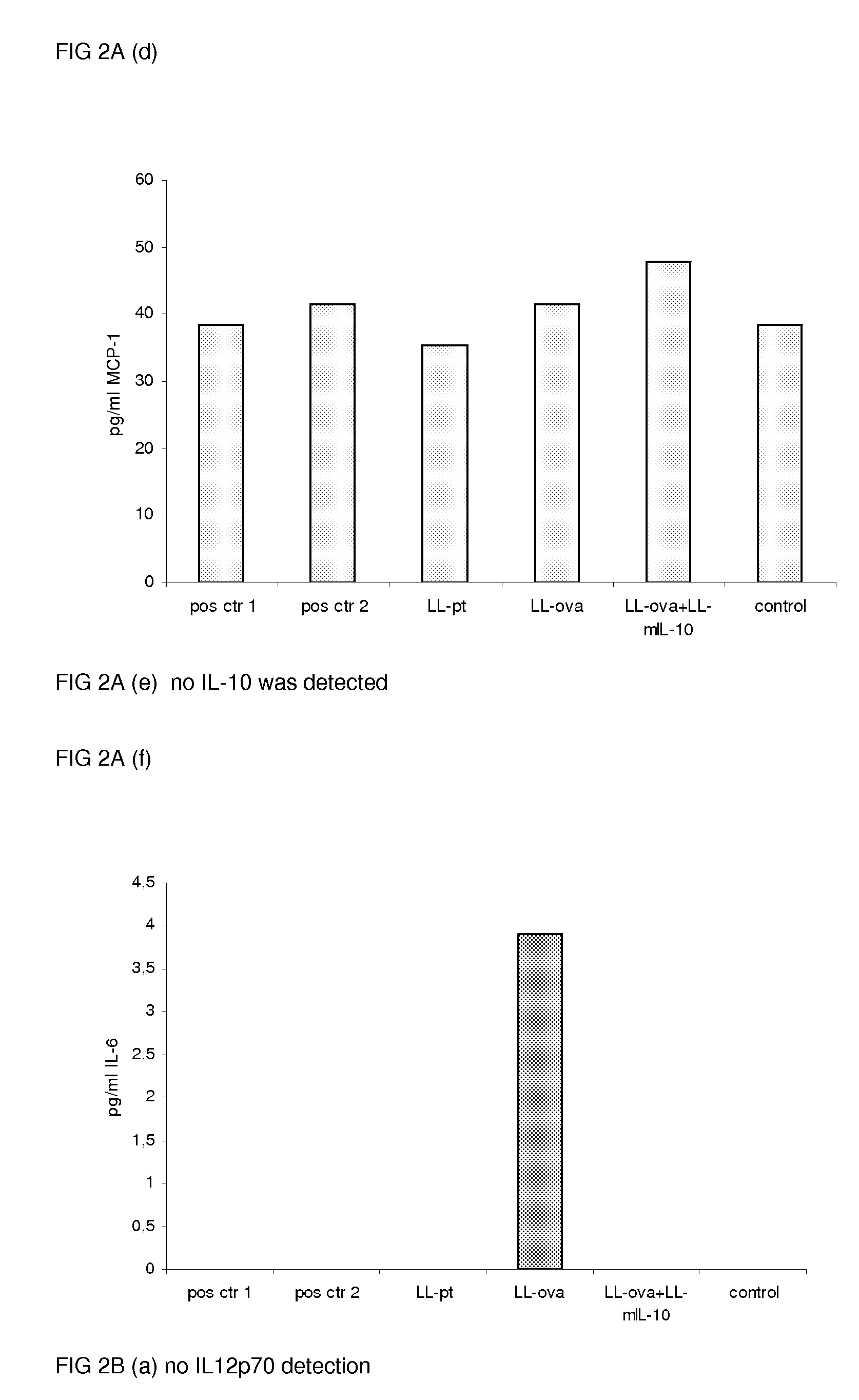Induction of mucosal tolerance to antigens
a technology mucosal tolerance, which is applied in the field of induction of mucosal tolerance to antigens, can solve the problems of insufficient human translation of methods, no active suppression, and general disappointment in human clinical data, and achieves stable mucosal tolerance response, better suppression of antigen-specific immune response, and oral tolerance
- Summary
- Abstract
- Description
- Claims
- Application Information
AI Technical Summary
Benefits of technology
Problems solved by technology
Method used
Image
Examples
example a
Induction of Tolerance to Ovalbumin Following Oral Administration of L. lactis Secreting Said Ovalbumin in Combination with In Situ Delivered IL-10
Material and Methods to the Examples
Bacteria and Plasmids
[0069]The L. lactis strain MG1363 was used throughout this study. Bacteria were cultured in GM17 medium, i.e. M17 (Difco Laboratories, Detroit, Mich.) supplemented with 0.5% glucose. Stock suspensions of all strains were stored at −20° C. in 50% glycerol in GM17. For intragastric inoculations, stock suspensions were diluted 500-fold in fresh GM17 and incubated at 30° C. They reached a saturation density of 2×109 colony-forming units (CFU) per ml within 16 hours. Throughout this study, mixed bacterial suspensions were used. Therefore, the bacteria that have to be mixed were harvested by centrifugation and pellets of both bacterial cultures were concentrated 10-fold in BM9 medium (Schotte, et al., 2000). For treatment, each mouse received 100 μl of this suspension by intragastric cath...
example a1
LL-IL10 Significantly Enhances the Tolerance-Inducing Capacity of LL-Ova
[0077]To study the induction of oral tolerance, mice were orally fed GM L. lactis [LL-pt: mixed bacterial suspension of LL-pT1NX [all] (=vector control) and LL-pT1NX; LL-OVA: mixed bacterial suspension of OVA-secreting L. lactis [all italics] and LL-pT1NX; LL-OVA+LL-mIL-10: mixed bacterial suspension of OVA-secreting L. lactis and murine IL-10 secreting L. lactis] 6 times 5 consecutive days (on days −46 till-42, −39 till −35, −32 till −28, −25 till −21, −18 till −14, −11 till −7 and −4 till −1) or a single dose of 20 mg OVA on day −7 [positive control 1] or frequent doses of 1 μg OVA on the same days as the L. lactis feeding [positive control 2]. Control mice were not orally treated. On day 0, mice were immunized s.c. with OVA in complete Freund's adjuvant and OVA-specific proliferation of the PLN / ILN cells was assessed on day 11. Addition of LL-IL-10 significantly enhanced the tolerance induction towards OVA as...
example a2
LL-IL10 Potentiates Oral Tolerance in Association with Reduced Production of Proinflammatory Cytokines in Response to Ova
[0078]To study the induction of oral tolerance, mice were orally fed GM L. lactis or OVA as described above (example 1) and were subsequently immunized s.c. with OVA in complete Freund's adjuvant. Eleven days following the immunization, the cytokine production in response to OVA in the MLN and PLN / ILN was quantified by Cytometric Bead Array, using the mouse inflammation kit. In the MLN, the production of the proinflammatory cytokines, IL-12, TNF-α, IFN-γ and IL-6 was not detected or strongly reduced in the LL-ova+LL-mIL-10 group in comparison to the LL-ova group in which a strong production of these pro-inflammatory cytokines was observed (FIG. 2A). In the PLN, the production of the proinflammatory cytokines, TNF-α, IFN-γ, MCP-1, and IL-6 is strongly reduced in the LL-ova+LL-mIL-10 group in comparison to the LL-ova group and in this group the TNF-α, MCP-1 and IL-6...
PUM
| Property | Measurement | Unit |
|---|---|---|
| time | aaaaa | aaaaa |
| time | aaaaa | aaaaa |
| volume | aaaaa | aaaaa |
Abstract
Description
Claims
Application Information
 Login to View More
Login to View More - R&D
- Intellectual Property
- Life Sciences
- Materials
- Tech Scout
- Unparalleled Data Quality
- Higher Quality Content
- 60% Fewer Hallucinations
Browse by: Latest US Patents, China's latest patents, Technical Efficacy Thesaurus, Application Domain, Technology Topic, Popular Technical Reports.
© 2025 PatSnap. All rights reserved.Legal|Privacy policy|Modern Slavery Act Transparency Statement|Sitemap|About US| Contact US: help@patsnap.com



